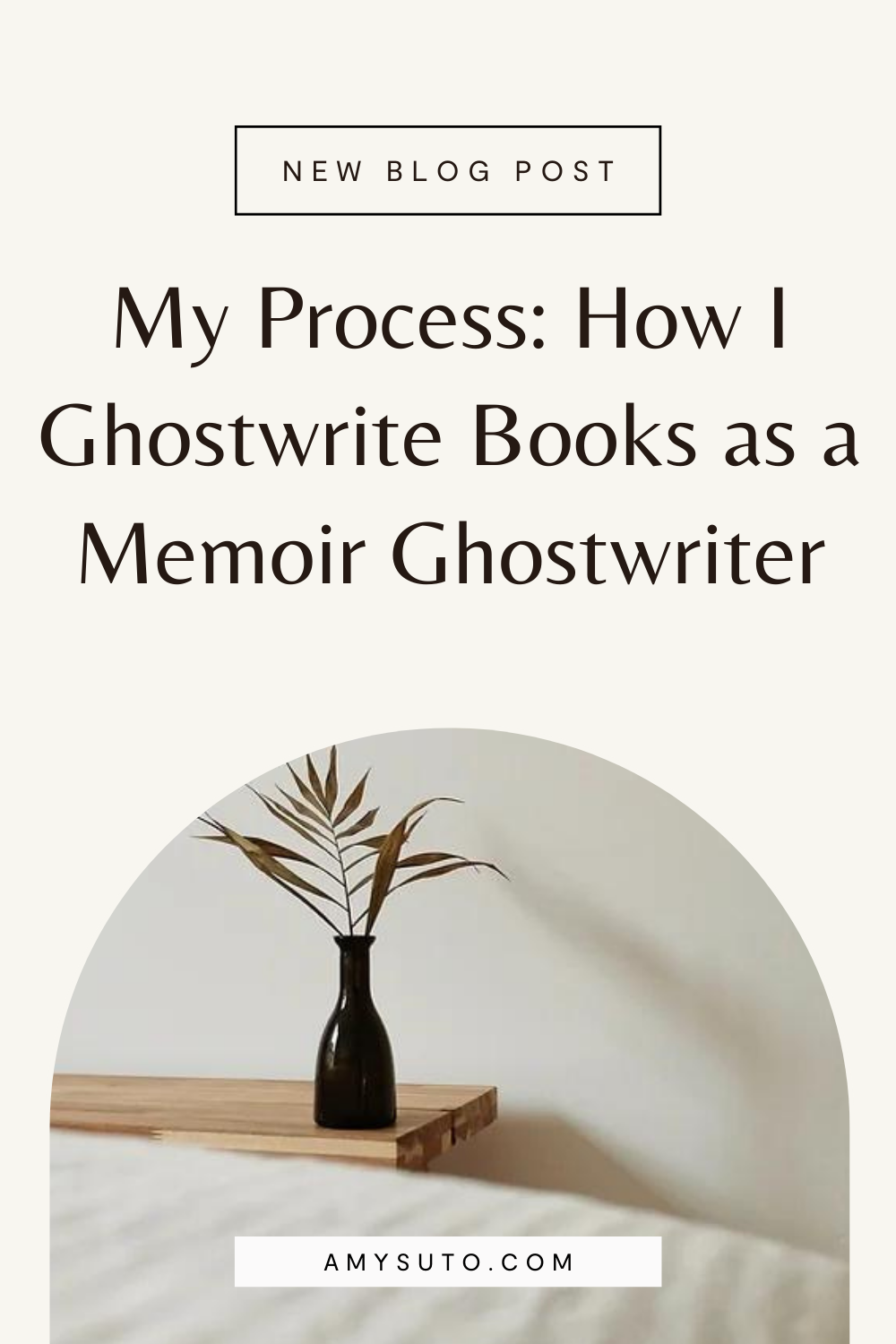My Process: How I Ghostwrite Books as a Memoir Ghostwriter
Every life has a story worth telling — let’s find the shape of yours.
Whether you’re a founder reflecting on decades of innovation, an Olympian sharing the road to gold, or simply someone with a legacy to leave behind, I help translate the moments that made you into a memoir that will outlast trends and time.
As a memoir ghostwriter and developmental editor, I’ve partnered with extraordinary individuals across the globe — from Silicon Valley to the snow-covered peaks of Austria. Some clients have flown me out for in-person interviews in their homes or on their ranches, where we’ve uncovered the personal details that only reveal themselves in conversation and setting. Others prefer to work entirely virtually. Either way, I build a deep and thoughtful partnership designed to turn your lived experience into a beautifully structured and emotionally resonant book.
If you’re ready to begin your memoir and are seeking a trusted collaborator to bring your story to life, I invite you to reach out — I take on a limited number of high-touch projects each year.
Want to learn more? Here’s how my memoir ghostwriting process works — from first interview to final proof:
Phase One: Start with Story
We begin with curiosity. Why do you want to tell this story — and why now?
In our initial calls, I’ll guide you through a discovery process that helps surface the core themes, emotional arcs, and big questions at the heart of your life story. You don’t need to have it all figured out — that’s my job. I’ll ask about the pivotal people in your life, the moments that changed everything, and what legacy you hope to leave behind.
If needed, I travel to meet with clients in person — whether to the mountains of Canada or the cafés of Vienna — to better understand the environment that shaped them. These immersive experiences offer rich detail and insight that inform every page.
Phase Two: The Macro Outline
Structure is everything — especially in memoir. Before I begin drafting, I create the first step in my proprietary two-part outlining process. This first deliverable is a macro outline, a detailed document that offers a bird’s-eye view of your book.
This macro outline includes:
Primary storylines and turning points
Thematic throughlines
Emotional beats and pacing
Narrative arcs and structure (linear, fragmented, braided, etc.)
This big-picture blueprint draws on my background as a TV writer, where structure is sacred and every scene earns its place. Many memoirs fall flat because they lack shape — but structure, when done well, gives meaning and momentum to your memories.
You’ll review the macro outline and offer feedback. We may do another round of interviews at this stage to deepen or clarify certain sections.
Phase Three: The Chapter Outline
Once the macro structure is approved, I create a comprehensive chapter-by-chapter outline. This deliverable is precise — each chapter has a clear purpose, emotional arc, and narrative drive. This is the final roadmap before the draft begins.
Some clients tell me this outline alone helped them see their story more clearly than ever before.
Phase Four: Drafting the Book
When we move into drafting, I shift to asynchronous collaboration. Here’s how that works:
I write 1–3 chapters per week and send them via email.
You leave feedback directly in the document I’ll share with you.
Each week, I also send tailored questions to help fill in any narrative gaps.
Prefer voice memos? Perfect. I encourage clients to respond in the way that’s easiest for them — voice, email, even a photo of a scribbled journal entry. My goal is to keep you in reflection mode and myself in writing flow.
While I’m always happy to accommodate meetings if needed, I find this approach allows for deeper creative work and more thoughtful input.
Phase Five: Revisions and Refinement
Once the first full draft is complete, we invite early readers — friends, family, trusted advisors — to offer feedback if you wish. Based on those insights and our own discussions, I’ll develop a rewrite plan.
Then comes the refinement process:
Two full rounds of revisions
A line edit to ensure polish and clarity
A proofread for grammar and consistency
I may also bring in trusted beta readers depending on the needs of the project.
Phase Six: Setting You Up for Success
Once your memoir is complete, I’ll help you determine the best path forward — whether that’s querying agents for a traditional deal or taking full ownership with a high-quality self-publishing strategy.
I work closely with a curated network of trusted partners, from book designers to marketing experts, and I’m happy to make warm introductions when possible based on your goals.
Ready to Begin?
Memoir writing is a collaboration — not a transaction. I take on a limited number of projects each year so I can devote my full creative energy to each one. If you’re ready to preserve your legacy in book form, let’s begin the conversation:


